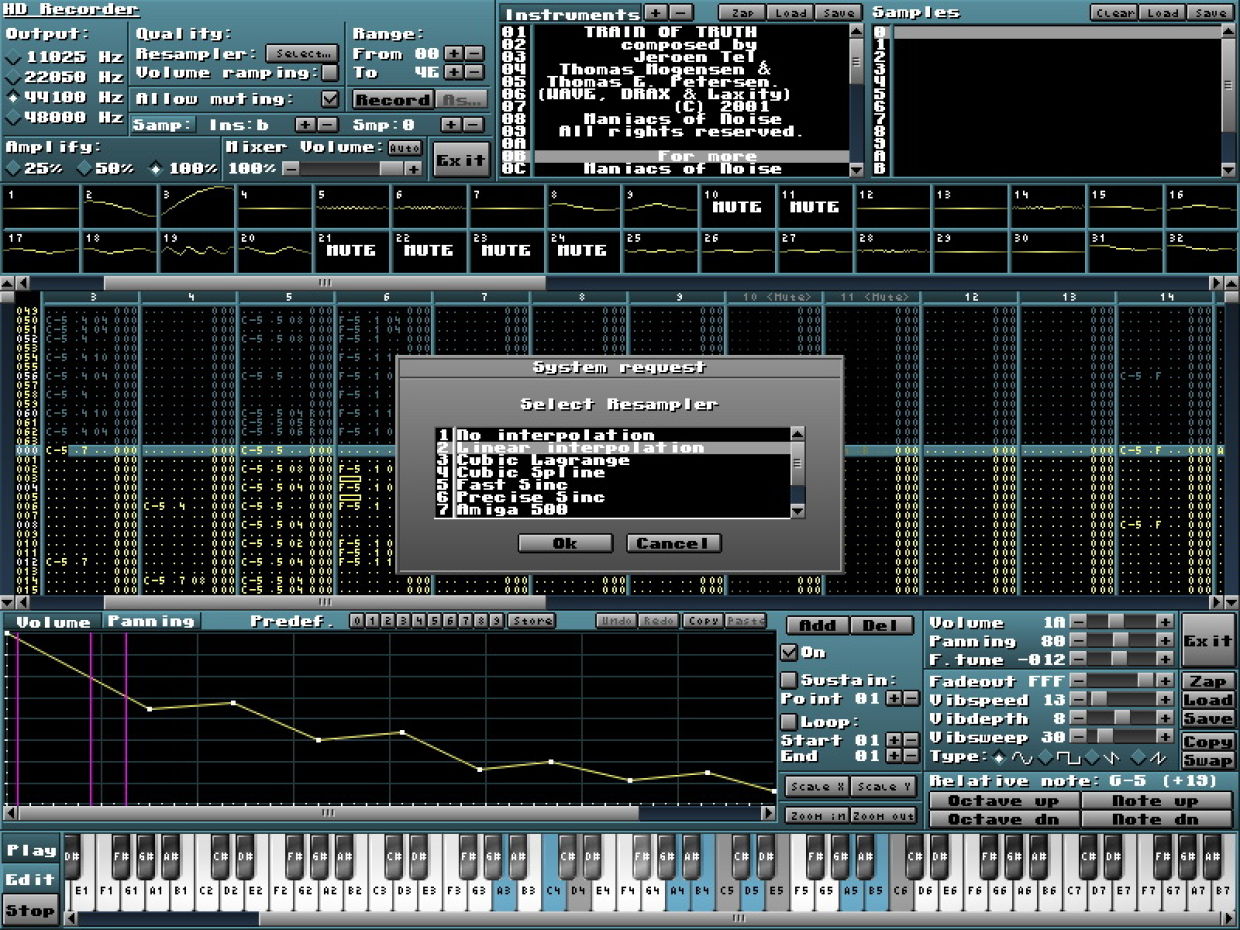
Music wasn't always made on fast multi-core computers with gigabytes of RAM. It was fun to noodle around with, but it definitely wasn't something I'd take on the road (and by "road", I mean "studio") to perform or to an event to teach people about computer music. Once I got serious about making music on it, rather than just making loops for fun, I found that it ran very slow even with just a simple sequence, and a lot worse when I added more synths into the mix. No JACK required, and a fairly lightweight solution.Īfter an afternoon of trying out my simple Pi audio workstation, I found that it only worked as a proof-of-concept. I sent signals from Seq24 to ALSA's inbuilt MIDI-In to trigger AMSynth.
I eventually settled on the modular Seq24 MIDI sequencer to provide a "piano roll" editing interface for composition, along with AMsynth as the synth to provide sounds. Because many Linux sound applications expect JACK, my options were more limited than what I am used to on my Slackware workstation. I found straight away that JACK on a Pi was not practical. Lightweight ALSA appsĪt first, I looked at a few of the usual suspects for low-spec sound work I loaded up a few modular components and tested them out. Linux offers a lot of both, so the first order of business is to look at the options out there, and try them out on the Pi. Sequencer: a program that keeps track of what sound will play and when.So what do we need to make music on the Pi? Electronic music traditionally consists of two components: If you're not familiar with that style of interface, then go with LXDE (which is usually the default desktop on Pi distributions). If you're familiar with Fluxbox or Ratpoison, those may be the non-desktops to go with when making music. Regardless of which Pi model you use, you'll want to keep the overhead for the rest of the system as low as possible. I'll mention significant differences in performance when applicable. As it turns out, I didn't end up needing a mouse, so in the end I did do a little testing on the A+. When I set out to make my Pi into a digital audio studio, I thought I would need one USB port for a mouse and one for a keyboard. I do have access to a model A+ (256MB RAM), but it only has one USB port. I wanted to aim as low as possible, so I did all my work on a Raspberry Pi v1 model B. Turns out, it can be quite an amazing little sequencer, as long as you know what tools to use and aren't afraid to learn a little something new. Whitepaper: Data-intensive intelligent applications in a hybrid cloud blueprint.eBook: Running Kubernetes on your Raspberry Pi.Getting started with Raspberry Pi cheat sheet.For more information and discussion, please see the blog post. Third Party Tools and Further ReferencesĬurrently, the most popular tools to create and edit Tracker Modules are MilkyTracker for OSX and OpenMPT for Windows.
#Milkytracker audio driver download#
As a result, tracker modules lend themselves to games, where music is required but where a large file download would be a problem. A single sound sample can be modified in pitch and volume (and can have other effects applied), so it essentially acts as an “instrument” which can play a tune without the overhead of recording the whole tune as a sample. ogg) in that they can be very small without a corresponding loss of sound quality. Tracker module files differ from mainstream PCM formats (. xm), and the original Module File Format (. Unity supports the four most common module file formats, namely Impulse Tracker (. In contrast, tracker modules include high quality PCM samples that ensure a similar experience regardless of the audio hardware in use. However, MIDI has a disadvantage in that the sounds are dependent on the sound bank available in the audio hardware, so MIDI music can sound different on different computers. The tracks are scores that contain information about when to play the instruments, and at what pitch and volume and from this, the melody and rhythm of the original tune can be recreated. Tracker Module files are similar to MIDI files in many ways. The concept was introduced in the 1980’s (mainly in conjunction with the Amiga computer) and has been popular since the early days of game development and demo culture.

Tracker Modules are essentially just packages of audio samples that have been modeled, arranged and sequenced programatically.


 0 kommentar(er)
0 kommentar(er)
